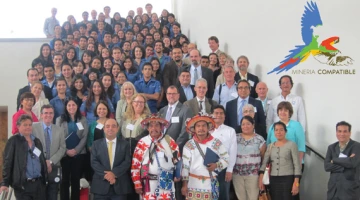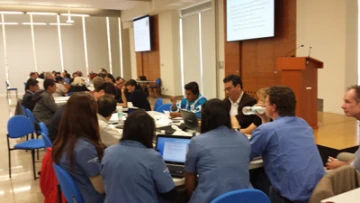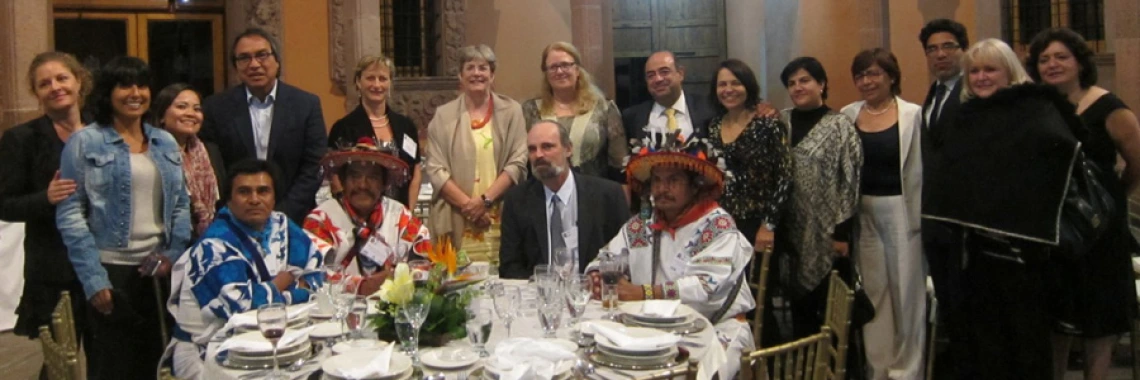When
Where

The University of Arizona Superfund Research Program (UA SRP) together with the Dean Carter Binational Center for Environmental Health Sciences and the Universidad Autónoma de San Luis Potosí organized the “Latin American Conference on Compatible Mining: Protecting Vulnerable Populations and the Surrounding Environment.” The event was held in San Luis Potosí, México on September 8-10, 2014.
Goal
The main aim of this multi-stakeholder conference was to assemble an international group of experts, government officials, non-governmental organizations, and community and industry leaders to discuss how to implement compatible mining appropriate to the needs and perspectives of vulnerable populations and the surrounding environment. The three-day conference brought professionals from the USA and Latin America together to create the proposed international working group.
The conference is envisioned as the first in a series of three meetings in Latin America to establish, organize and sustain a Latin-American working group for compatible mining. The proposed conference outcome is a long-term vision for a permanent regional hub supporting sustainable mining. The hub will become a model that can be replicated around the world.
Highlights of the event
The University of Arizona Superfund Research Program (UA SRP) together with the Dean Carter Binational Center for Environmental Health Sciences and the Universidad Autónoma de San Luis Potosí recently organized the “Latin American Conference on Compatible Mining: Protecting Vulnerable Populations and the Surrounding Environment.” The event was held in San Luis Potosí, México on September 8-10, 2014. The goal of this multi-stakeholder conference was to assemble an international working group of experts, government officials, non-governmental organizations, and community and industry leaders to build a Pan-American framework for “compatible mining.” The term compatible mining was coined at the conference and was defined as: the empowerment of communities, civilians, governments, and the private sector to collaborate in a way that minimizes and prevents the environmental and social impacts of mining.

Conference attendees took part in break-out sessions.
The meeting was sponsored by the National Institute for Environmental Health Sciences SRP program through an R13 conference grant issued to UA SRP investigator and Binational Center Director Jim Field. The conference was held on the campus of the Universidad Autónoma de San Luis Potosí (UA SLP), and was held in both English and Spanish. Attendees were from eight different countries: Argentina, Bolivia, Brazil, Canada, Columbia, Peru, Mexico, and the United States. The group encompassed stakeholders from all aspects of mining including industry, indigenous communities, NGOs, regulatory, consulting, and academia as well as more than 100 UA SLP students. Sessions ranged from health impacts, to environmental impacts and remediation, to perspectives from indigenous communities, governments, and industry.
The last day of the conference was devoted to defining and planning the future of compatible mining. As a first step, the group identified and then prioritized the most pressing issues in mining. Sixteen issues were identified and from this list the top five were prioritized: 1) Building a collaborative hub; 2) Development of best practices; 3) Education; 4) Community; and 5) Environmental health. The second step involved an intense break-out session where the attendees self-divided into one of the five priority groups and discussed: what actions and what advances are needed to address each issue; the barriers to solving the issue and how these barriers can be overcome; how information can be shared across geographical and political boundaries; and what are the next immediate steps needed to move forward. There was unanimous agreement to move forward and create a Pan-American Hub for Compatible Mining with goal of creating an international collaborative to enable networking amongst professionals and communities over the next 18 months and culminating in a second meeting in Peru in early 2016 to discuss next steps.
Learn More
Read more in the NIEHS Environmental Factor
Thank you to our sponsors
National Institutes of Environmental Health Sciences / Universidad Autónoma de San Luis Potosí / University of Arizona Superfund Research Program / Lowell Institute for Mineral Resources / Center for Environmentally Sustainable Mining

Attendees enjoy dinner at a local restaurant; lead conference organizer Jim Field is seated with members of the Huicholes Indigenous Community.

